Subclass Acari Rank Species | Order Prostigmata Genus Eriophyes Higher classification Eriophyes | |
 | ||
Similar Eriophyes, Eriophyidae, Eriophyoidea, Eriophyes laevis, Arachnid | ||
Eriophyes tiliae larva
Eriophyes tiliae is a mite that forms the lime nail gall or bugle gall. It develops in a chemically induced gall; an erect, oblique or curved distortion rising up from the upper surface of the leaves of the common lime (US: linden) tree Tilia × europaea (synonym T. × vulgaris).
Contents
- Eriophyes tiliae larva
- The physical appearance
- Taxonomy
- Life cycle
- Gall forming insects
- Infestations of lime nail galls
- References
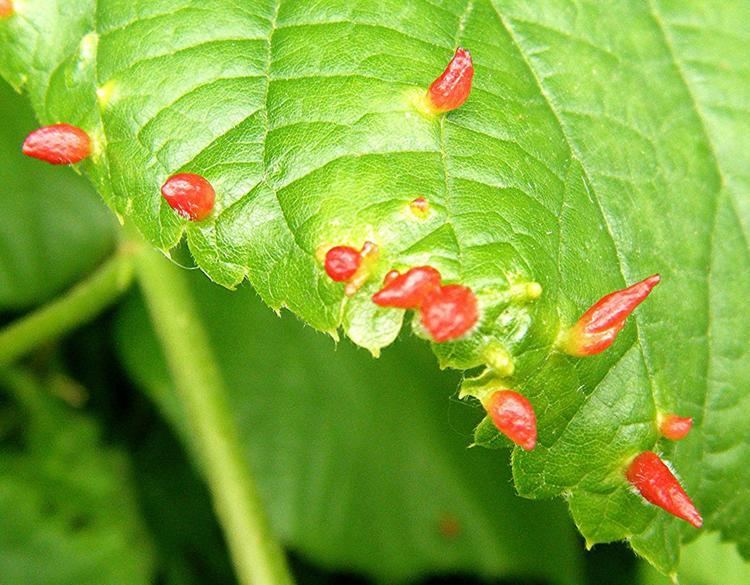
The physical appearance
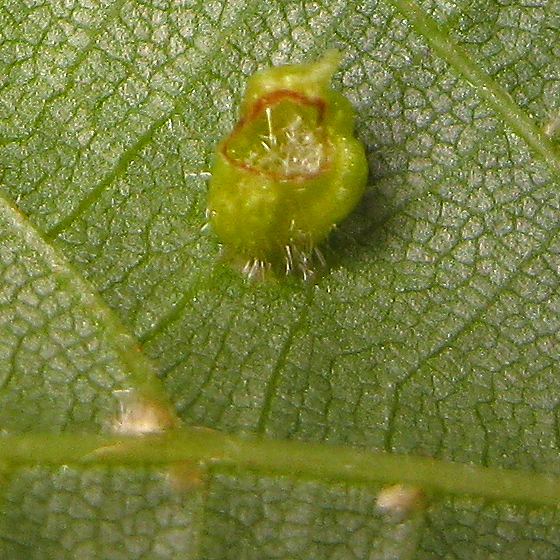
During late spring and summer, tubular growths up to 5 millimetres (0.20 in) long develop on the upper surface of lime tree leaves. These galls may be yellow-green or red in color, may be very numerous, and predominantly occur on the lower leaves in some sub-species.
Taxonomy

Several sub-species have been identified, partly identified by their positioning on the leaves in relation to the veins and other structures.
Life cycle
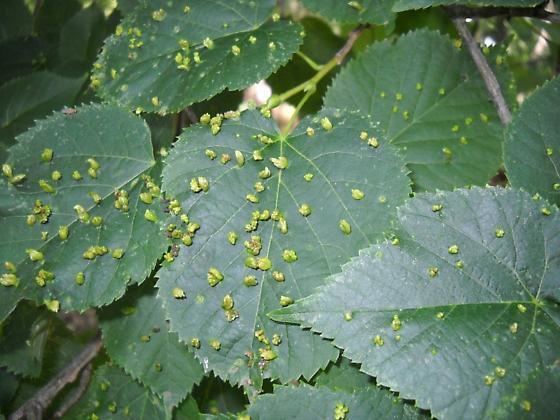
The mites move onto the foliage in the spring, having overwintered in the bark crevices or around buds. These gall inducers are less than 0.2 mm long, however the chemicals they release while sucking the sap from the lower leaf epidermis have a dramatic, consistent and colourful effect, causing upward growing, hollow, yellow, red or pink, finger-like extensions. Before the autumn, the mites, which up to now have been actively feeding and growing inside the galls, depart from these shielings and seek sheltered and protected sites on the lime tree. The mites will pass the winter in such locations and then the cycle will be repeated. This species is one amongst a number of gall-formers which can be superficially similar in appearance; however E. tilae tilae is restricted to lime trees.
Gall forming insects
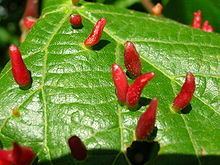
Some herbivorous insects create their own microhabitats by forming, in this case, a highly distinctive plant structure called a gall, composed of plant tissue, but controlled by the insect. Galls are both habitat and food source for their creator. The interior of a bedeguar gall is formed from the bud, and is composed of edible nutritious and structural tissues. Some galls act as "physiologic sinks", concentrating resources in the gall from the surrounding plant parts. Galls may also provide the insect with some physical protection from predators.
Infestations of lime nail galls
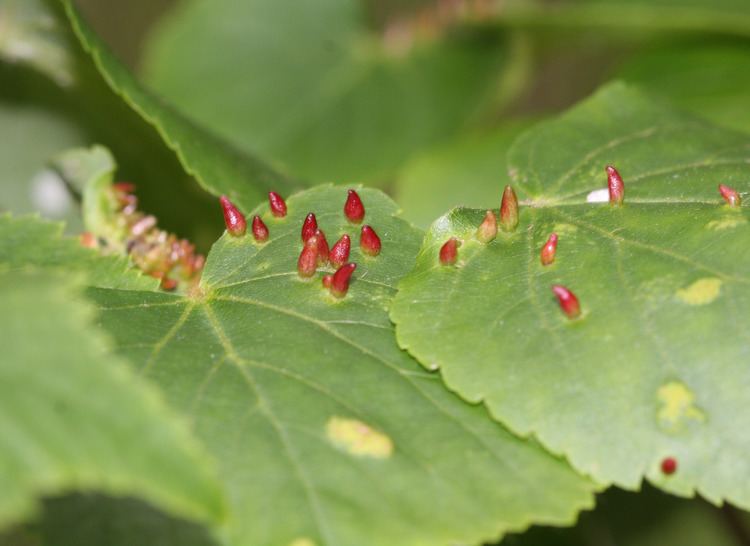
The galls induced appear not to affect the health of the lime trees and no way of controlling or preventing them exists.
